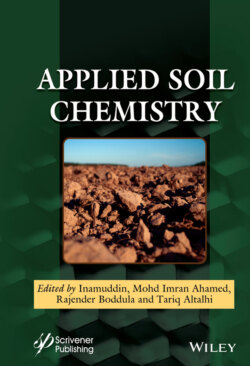Читать книгу Applied Soil Chemistry - Группа авторов - Страница 26
1.2.7 Uncertain Impacts of Soil Erosion and Redistribution on Its Carbon Store
ОглавлениеSoils are not static systems. Climatic and geological processes act continuously to impact soils. Several of these processes disturb and redistribute soils due to erosion and transportation actions associated with the forces exerted by blowing winds and/or flowing water. Soil erosion ultimately moves the organic content of soil from its place of original formation to another, or ultimately distribute portions of soil from one location to several subsequent locations. Similar to the anthropogenic consequences of tillage, natural erosion processes lead to considerable soil disruption that is likely to increase the degradation rate of its organic matter [38]. However, if soils are merely displaced by a single erosion event, for example, by a landslip, relatively small amounts of carbon loss are likely to result. Unfortunately, the continuous and repeated nature of erosive forces and events leads soil components to gradually make their way, via fluvial actions, into ocean sediments. Although, the carbon that does ultimately arrive in ocean sediments may then be buried for many millennia and isolated from the ocean and atmosphere [38], much of the carbon temporarily fixed by the original soil formation processes is lost or partially degraded along the way. This makes it almost impossible to quantify on a global scale what quantities of carbon stored in soils is ultimately returned to the atmosphere by the geological forces of erosion. In the short term also, the quantities of crop residues entering a soil system is reduced by the actions of erosion at the surface, typically resulting from extreme or seasonal weather-related disturbances.
